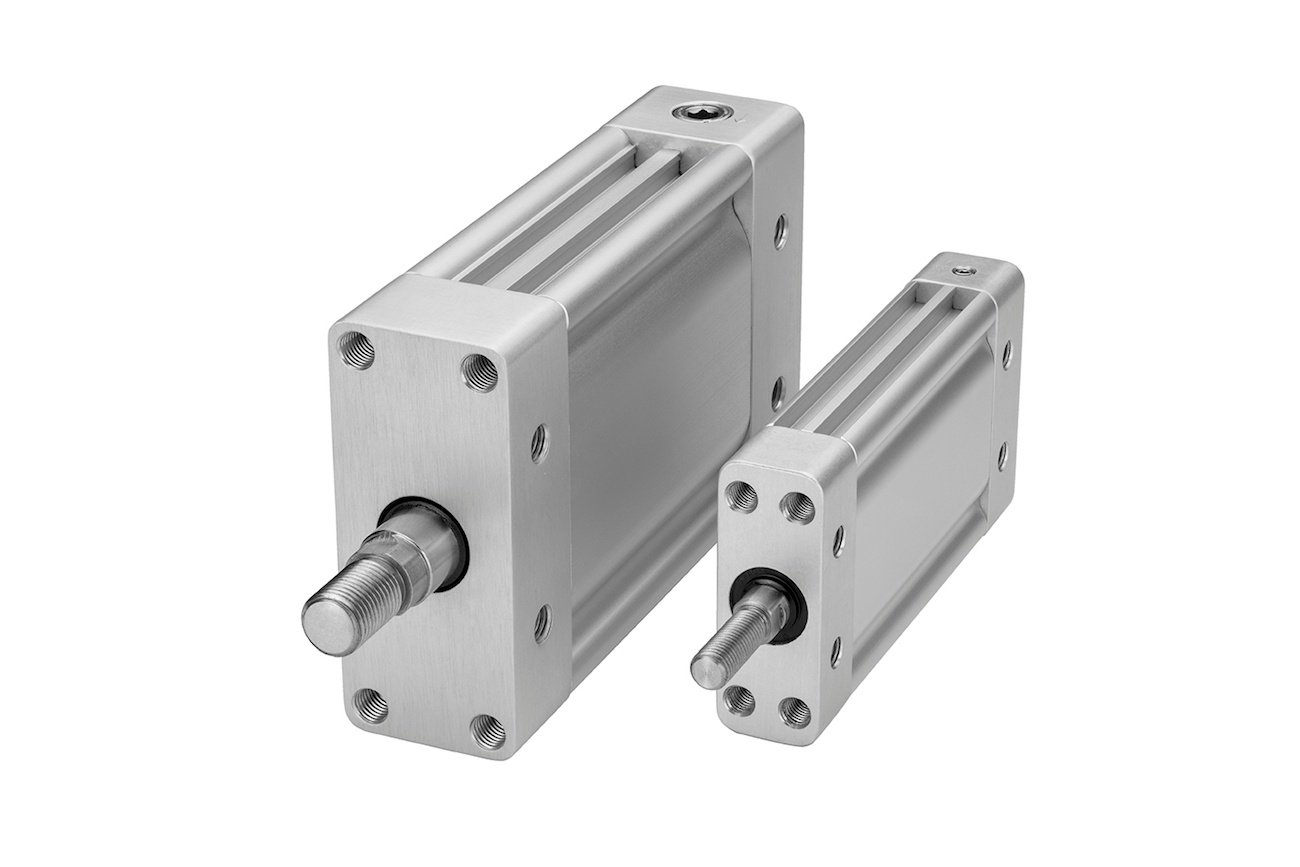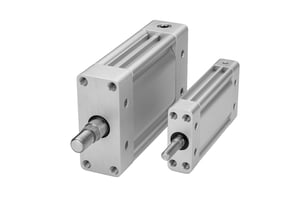
 Space is often a major consideration when designing equipment for industrial applications. While compact air cylinders have been used for decades, their popularity continues to increase because their short stroke and low profile can accommodate tight spaces where traditional cylinders would not fit.
Space is often a major consideration when designing equipment for industrial applications. While compact air cylinders have been used for decades, their popularity continues to increase because their short stroke and low profile can accommodate tight spaces where traditional cylinders would not fit.
Small But Mighty
While compact air cylinders are smaller than their larger cousins–and therefore exert less power–they still pack a mighty punch. If you want to be sure that they will be able to handle your application requirements, our force calculator can help you eliminate the guesswork. Compact air cylinders can generally be used for linear actuation and control in a wide variety of applications, including:
- Packaging
- Manufacturing
- Conveyor systems
- Food processing
- Material handling
- Automated assembly or sorting
- Bottling and filling
- Wire machinery
Resource: The Complete Guide to Air Cylinders
While some larger pneumatic actuators feature a rodless design, compact air cylinders use a piston rod. Single-action units provide force in one direction only, either to extend or retract the piston rod. The opposite movement can be benign (occurring automatically when air pressure is released) or spring-activated. Single-action compact air cylinders are a good choice for tensioning or other instances where a “resistance” is put on the rod, and the stroke of the cylinder is meant to counter that resistance.
Double-acting compact air cylinders use direct pressure to both extend and retract the piston rod. This style is commonly used in applications from bending and clamping to lifting and lowering, feeding, sorting, punching, and shaking.
Read More About Single vs. Double-Acting Cylinders
What Can That Small Size Do For You?
Compact pneumatic cylinders offer distinct advantages, thanks to their design versatility. These benefits include:
- Lighter weight
- Adaptable to more applications and environments
- Greater equipment design flexibility
- Multiple mounting options to further support efficient design and ensure top performance
- Numerous standard configurations are possible
- Custom design offers virtually unlimited options
- Powerful, reliable performance
- Multi-piston design can be used to produce greater thrust
- Feedback sensors can be used to accommodate multiple load positions
Choosing compact cylinders from W.C. Branham offers distinct advantages as well. We make both traditional and compact pneumatic cylinders, each of which can be spec’d in multiple lengths and bore sizes:
- ARTEC® Compact & Short Stroke Rod Cylinders
- ARTEC® ISO & UNITOP Rod Cylinders
- ARTEC® Stainless Steel ISO & Round Rod Cylinders
- ARTEC® Round Rod Cylinders
- DURATRK™ Rodless Cylinders
- MAGTEC® Magnetically Coupled Rodless Cylinders
- pneU-SA® Rodless Enclosed Cable Cylinder
Eliminating Piston Rotation
Piston rotation can be a serious challenge in many applications. Because traditional components are round, the rod is able to rotate slightly as it extends and retracts. This pushes the thrusting force off-center, reducing the cylinder’s ability to perform as expected. Eventually, this over-loading can cause rod bearings and seals to wear unevenly, or it can bend the rod and/or piston, requiring early repair or replacement. Rotation can even cause the rod to de-thread from the piston depending on the design.
Typically, guides are installed to prevent rotation. However, at Branham we have designed an elegant alternative—the OVLPRO™ Low Profile rod cylinder. The piston is oval, not round, keeping the piston rod from rotating as it extends or retracts, thus, reducing the risk of component damage or breakdown and giving the cylinder a lower profile. The OVLPRO™ can also be mounted flat or on its side, as well as be stacked.
This popular product offers threading and porting options, and it is available in 14 standard stroke lengths. The OVLPRO™ Low Profile compact rod cylinder has an even smaller bore.


